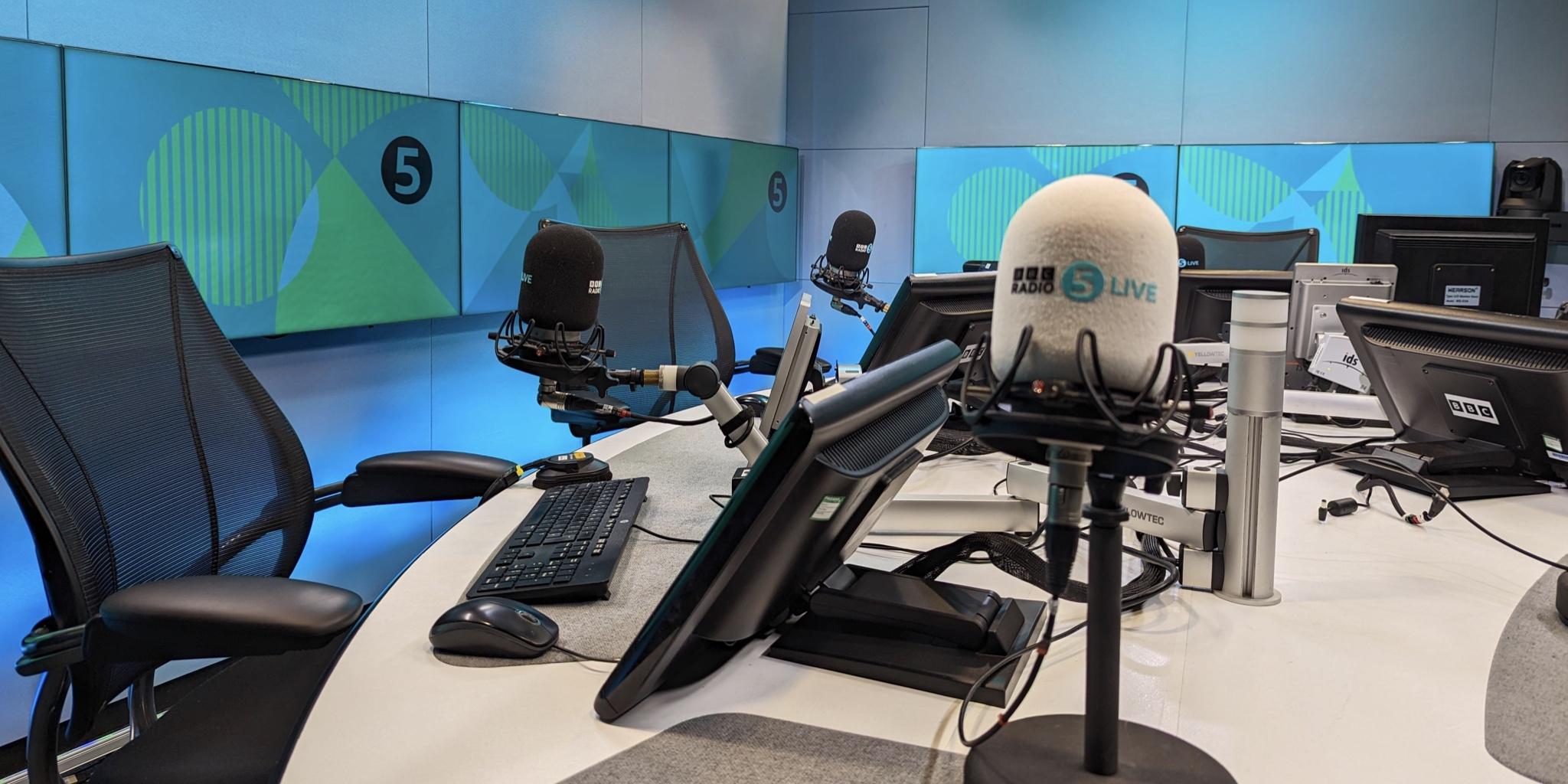Behind the scenes at BBC Radio 5 Live's visualisation

I should remind myself that people do actually read this newsletter, and sometimes if I’m criticising something, I’m criticising someone’s hard work.
So it was that I got an email from the BBC, noting that I’d be in MediaCityUK and “would I like to have a look at the visual radio setup for Nicky Campbell”. Yes, yes I would. And so, I did.
Everyone was very kind to me and nobody mentioned that I’d been quite rude, writing about “a big microphone partly obscuring (Nicky’s) face, big chunky headphones on, and a computer monitor also in view”.
It turns out that the brief from the TV people was that they wanted Nicky Campbell’s show to look like a radio programme. I’m not sure I agree with that decision, but that was the brief that the team were given; and the implementation of that brief is, actually, quite thoughtful.
A few bits of their implementation which struck me as being quite nice: when Nicky opens the talkback to his producers, the camera automatically changes to a wide shot that’s carefully positioned behind Nicky, so you don’t see his mouth moving. The big microphone both communicates that it is a radio programme as per the brief, but also affords the opportunity for Nicky to hide his face. If you’re on-air and in vision for two hours, you’re likely to want to hide your face at least some of the time. Fair enough.
Nicky’s normally in London, in fact, but in an identical studio: the camera is connected to the Salford gallery so appears just the same as any other. Nice.
I learnt that the project took nine months from the initial brief to on-air: that’s light-speed for the BBC. And, as someone who’s done my share of big projects at the BBC, what I found most impressive was how non-gold-plated it all was. Everything, from the cameras and lighting to the re-use of an existing radio studio was done in what seems to be an economical, sensible way with minimal extra staff - yet, drives two hours of national TV every weekday. (Broadcast Bionics have made much of the vision tech: automated vision mixing so good that they rarely have to touch it.)
It appears to be working, too - the programme gets many more callers than it used to, and also the callers are more female than they used to be. (5 Live has a lot of sports output, which means it skews male in audience).
I looked forward to watching a little more, now I understood how it worked: but that wasn’t to be - Big News Events overtaking the phone-in on the rare times I was able to watch. However, I’m grateful to the team for their kindness shown to me in Salford.